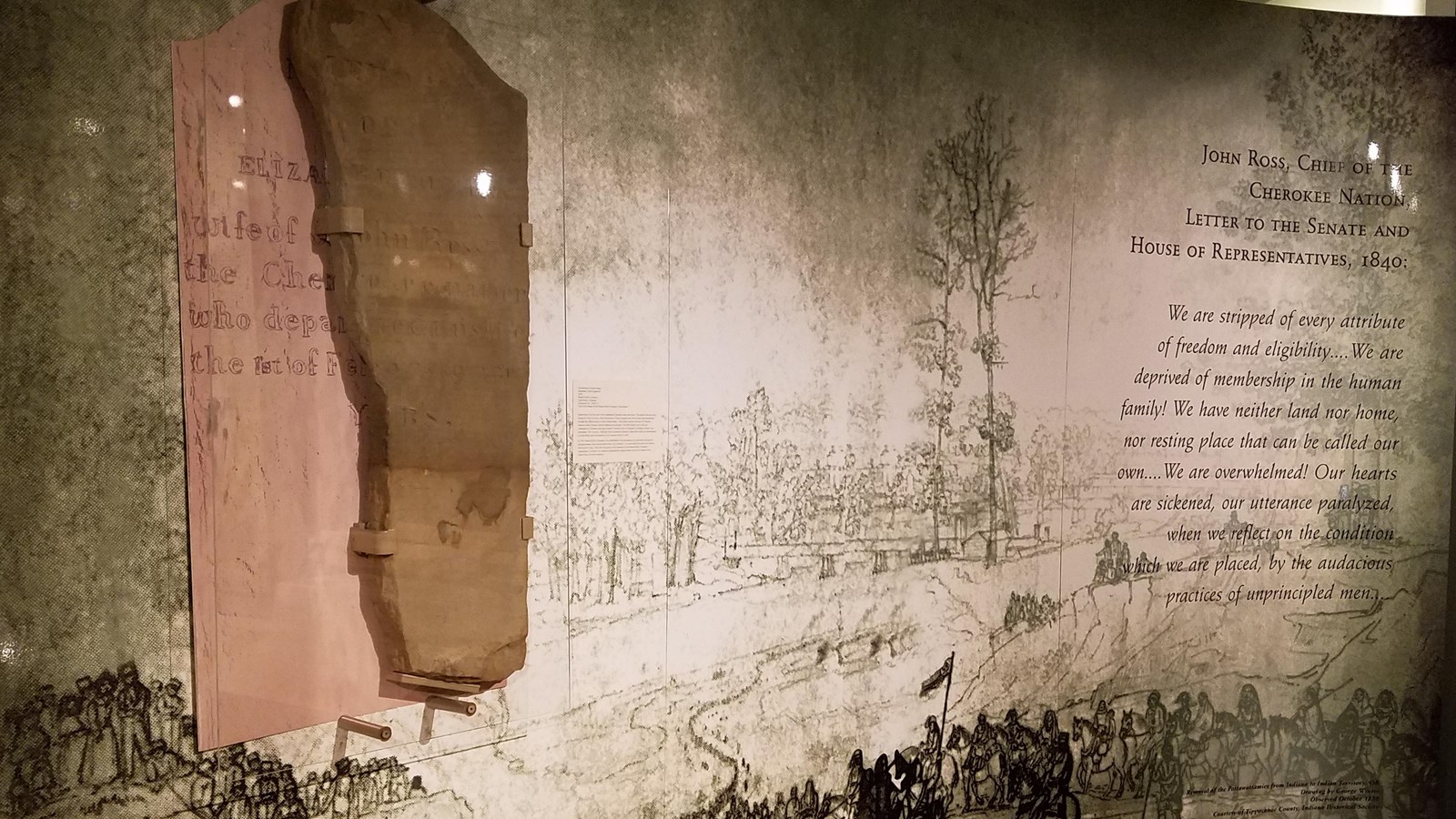Last updated: October 29, 2023
Place
Historic Arkansas Museum

NPS Photo
The permanent exhibit, "We Walk in Two Worlds," tells the story of Arkansas’s first people, the Caddo, Osage and Quapaw Native American tribes from early times to today. The exhibit is told through objects and research. Approximately 158 objects, such as pottery, clothing and weapons, will be on exhibit. The exhibit has six thematic areas that are arranged chronologically. Along with objects and a historical timeline are passages of relevant research from archeologists, historians and ethnographers. Throughout the exhibit, is the dominant presence of the Native American voice, from each of Arkansas’s three prominent tribes. During the two years of exhibit development, many tribal members were interviewed and it is this voice that informs, educates and guides visitors through the exhibit.
Two Trail of Tears Removal Routes interest in Little Rock, the Water Route - which followed the Tennessee, Ohio, Mississippi, and Arkansas Rivers - and the Bell Route which coursed east-west through Tennessee and Arkansas before ending in Indian Territory.
Indian Removal is a primary theme and the Trail of Tears is featured. A feature object is Quatie Ross' gravestone. She was the wife of Cherokee Chief John Ross and passed away onboard a steamboat following the Water Route of the Trail of Tears just before Little Rock. She is buried in town at Mount Holly Cemetery.
Site Information
Location (1100 North Street, Little Rock, AR 72201)
Amenities
Permanent and changing exhibits, education programming, children's activities, restrooms, gift shop.
Safety Considerations
More Site Information
Trail of Tears National Historic Trail
Trail of Tears: Arkansas River Water Route Itinerary
You can visit multiple Water Route sites on the Arkansas River by following the Trail of Tears: Arkansas River Water Route Itinerary. Each site features one aspect or story about the Cherokee and Creek experience traveling the Trail of Tears by water, highlighting the challenges and complexities that arose daily on the Arkansas River.
